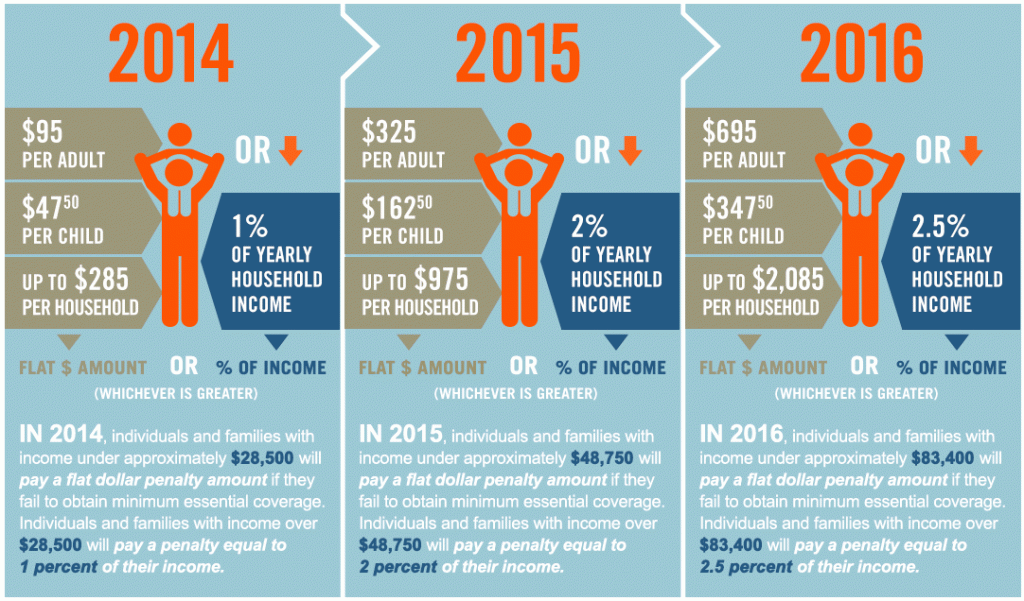ObamaCare 2015







What You Need to Know About ObamaCare (the Affordable Care Act) in 2015
There aren’t a lot of changes for ObamaCare in 2015. Let’s review ObamaCare’s 2015 changes and what you need to know to stay covered and save money. We will review the enrollment process for 2015, what steps you should take to ensure the law is working for you, how to make sure you are getting the right amount of cost assistance, how to make sure you have the right plan, and some potential pitfalls to watch out for in regards to your insurance and longevity of the law itself.
NOTE: The first round of ObamaCare enrollment numbers are in. Check out the enrollment numbers for 2015.

ObamaCare’s Open Enrollment 2015
Let’s cover the most important thing first, ObamaCare’s 2015 open enrollment is going to be almost exactly like the last one. But there are a few differences, let’s cover those now:
• For 2015 you’ll need to enroll, switch plans, and/or apply for (or adjust) cost assistance between November 15th, 2014 and February 15th, 2015.
• During open enrollment 2015 you can change plans. In fact open enrollment is the only time you can change plans outside of qualifying for a special enrollment period. This is true whether you shop on the health insurance marketplace or not.
• Insurers are offering 25% more plans overall. While not all regions will see a big increase in plans, some will. So even if you like your plan shop around and compare your options.
• Two notices are going out to all folks insured through the marketplaces about renewing plans, verifying information, and options for 2015. Most people will automatically be renewed in a plan and cost assistance. If your plan isn’t offered you may be enrolled in a similar plan. In order to make sure you have a choice over what plan you get you’ll want to take action by going to the marketplace and confirming your information before December 15th, 2014.
• All marketplace plans from 2014 end December 31st, 2014 and new 2015 plans start as early January 1st, 2015.
• If your income changed or living situation changed verify it with the marketplace. A new job that offers full-time coverage or a change in income can affect your cost assistance. Tax credits may be applied up front based off of what is projected to happen, but they will be adjusted on the end of the year based off what actually did. Verify your information so you don’t end up owing money by taking too much up front, or by not getting the full amount of assistance you qualify for.
State Marketplace Changes 2015
Three states have changed what their marketplaces will offer. Marketplaces may change every year, if your state no longer offers a marketplace you will use healthcare.gov to get coverage and cost assistance. If you are unsure how to get covered in your state you can find your state’s marketplace here.
If you’re from Idaho, you’ll use the Your Health Idaho website to apply for and enroll in 2015 coverage instead of HealthCare.gov. Learn more if you’re from Idaho.
If you live in Nevada or Oregon, you’ll use HealthCare.gov to enroll in 2015 insurance instead of your state Marketplace. Learn more if you live in Nevada or Oregon.
Cost Assistance and the Federal Poverty Level in 2015
Cost assistance is calculated based on your projected income for 2015, so make sure to verify your current information with the marketplace to ensure you won’t owe more money on your federal income taxes or get short changed. The eligibility levels for who qualifies for cost assistance rise each year as they are based on federal poverty levels (FPL) which are adjusted for inflation and other factors. To get access to tax credits and have your premium capped at at least 9.5% of your modified adjusted gross income you must make no more than 400% of the FPL, for out of pocket subsidies you must make no more than 250% FPL, for Medicaid you must make no more than 138% FPL (the 138% FPL limit only applies to some states. States that did not expand medicaid have lower eligibility guidelines)
2015 Premium Changes
The costs associated with healthcare rise each year, this was true before ObamaCare and is still true now. While the Affordable Care Act does a lot to limit long term increases and does some stuff to limit short term increases like the rate review provision and 80/20 rule, we can still expect health insurance premium rates to rise this year. The projections currently show that rates are growing slower, before subsidies taken into account, than in previous years. Of course if you are one of the tens of millions who qualify for cost assistance you can expect a relatively affordable premium despite any premium hikes in your region. When pointing fingers for premium increases don’t discount the fact that there is a lot more going on than just ObamaCare when it comes to rate increases. Beyond the Affordable Care Act’s new provisions, you’ll want to look at state insurance boards, insurance providers, your region, competition, healthcare providers in your area, and more to get the full scoop on rate hikes.
Keeping Grandfathered Plans in 2015
Just because you kept your grandfathered plan last year doesn’t mean you will be able to keep it again. The “if you like your plan you can keep it” simplification made a good talking point, but the truth is that it is up to your state and your insurance provider to ensure your grandfathered plan is offered. Some folks may be able to renew their plan in 2015 and in 2016, others will need to shop around for coverage during open enrollment.
Shopping Outside of the Marketplace For Health Insurance in 2015
If you make more than 400% of the FPL, or you have a lot of medical needs and come close you to the 400% mark, may want to check out your options outside of the marketplace. The marketplace only offers a select amount of plans, as insurers have a choice of whether or not to offer plans on the marketplace. Although we have seen a nice increase in the amount of plans offered, to see all the plans in your region you will need to shop around and get quotes from brokers who offer plans outside of the marketplace. Plan prices are highly regulated so, disregarding subsidies, the same plan will always have the same costs in a given region.
Changes to Medicaid in 2015
States can still move forward to Medicaid expansion in 2015, although the 2014 midterm election results make it unlikely that we will see any states embracing increased medicaid enrollment eligibility levels. PA recently expanded Medicaid, so if you make less than 138% of the federal poverty level, make sure to stay up to date on expansion in your state.
Employer Mandate 2015
The employer mandate (the one that said large employers have to cover full-time workers) starts in 2015 for businesses with more than 100 full-time equivalent employees, and has been pushed back until 2016 for employers with between 50-100 full-time equivalent employees.
Individual Mandate 2015 The Fee Has Increased
The Fee for not having coverage (officially called a shared responsibility fee) increases each year by set increments until 2017. In 2017 it adjusts for inflation. Here is the current per month fee for not having coverage:
$325 per person and $162.50 per child per year | or 2% of your income (whichever is greater) *please see our individual mandate page for more details. There are a few important factors that determine how much of the fee you will pay and you’ll want to review those and how to qualify for an exemption if you are thinking about going without coverage.
NOTE: You’ll use the 2014 fee if you went without coverage in 2014. The 2015 fee is what you will owe if you go without coverage in 2015.
FACT: If you make less than 133% of the federal poverty level you are exempt from the individual mandate tax.

Business Tax Credits 2015
Small businesses with 50 or fewer full-time equivalent employees (FTEs) can start using the SHOP (Small Business Health Options Program) this year to get coverage and apply for tax credits. In 2016 those with 100 or fewer FTE can use the SHOP. Any business who finds their states SHOP isn’t ready can apply for tax credits through an agent and even file for tax credits retroactively. Even if you don’t qualify for tax credits you can still use the SHOP if you meet the FTE requirement. If you want to use the SHOP in your state please visit HealthCare.gov to find your state’s SHOP portal.
ObamaCare Provisions that May be In Danger in 2015
When we think of the Affordable Care Act we think, “how will it work for me?” What also needs to be taken into account is, “how will it work for the country moving forward?” The two questions are connected. It’s no secret that there are folks who want to see the law repealed. While a full repeal is unlikely under President Obama, dismantling some of the key pieces is a real possibility for 2015. Check out our page on what provisions are in danger and educate yourself and prepare for upcoming talking points and water cooler wars, some of these unpopular provisions will need all the help they can get.
ObamaCare 2015 Changes in Summary
Not a lot has changed for the Affordable Care Act in 2015, but the changes that are happening do matter. Take a few minutes to make sure you have the plan you want, and your cost assistance is on point, to save yourself a headache down the road.